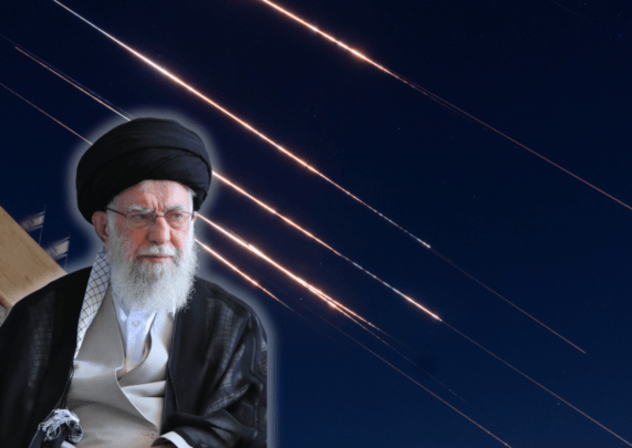ANALYSIS: A Regime in Freefall - Iran's Cascade of Failures Exposes a Hollow State

A cascade of devastating military strikes, high-profile security breaches in its capital, and damning international reports have shattered Iran's carefully constructed image of regional power, igniting intense scrutiny over the stability of the regime and the true nature of its nuclear ambitions.
In a matter of days, Tehran has seen its core narratives systematically dismantled by a series of events that have laid bare profound weaknesses at the heart of its military and security apparatus. The regime’s once-feared posture has been replaced by a portrait of humiliating vulnerability, raising urgent questions for the international community about the viability of the current leadership and the severe proliferation risks it continues to pose.
A Nuclear Program Unmasked
For years, Tehran has insisted that its nuclear program is for exclusively 'peaceful purposes.' However, that narrative now appears to be irrefutably shattered. According to detailed analysis from security experts at the Institute for the Study of War, recent precision strikes did not just hit a random facility, but a Uranium Metal Conversion Plant. Such a plant, experts note, has a primary function that is anything but peaceful: creating the explosive core for a nuclear weapon.
The regime's own actions have lent credence to these assessments. In a move that stunned international observers, Iranian state media broadcasted images of joint state funerals, publicly mourning top commanders of the Islamic Revolutionary Guard Corps (IRGC), such as Gen. Salami and Gen. Hajizadeh, alongside its top nuclear scientists. Analysts point out that by explicitly framing these figures as martyrs of a single, unified cause, Tehran has directly contradicted its own long-standing claims, effectively merging its military and nuclear ambitions in the public eye.
In response to these developments, Iranian officials have reiterated their standard denials, insisting their program remains peaceful. Yet, these claims are increasingly falling on deaf ears as the physical and symbolic evidence mounts, suggesting the regime’s pursuit of an atomic bomb was not a matter of speculation, but of undeclared policy.
A Fortress with No Walls
The image of an impenetrable, all-powerful state has been publicly humiliated by security failures within Tehran itself. In an extraordinary broadcast, Iranian state television aired footage of Ali Shamkhani, a senior aide to Supreme Leader Ali Khamenei, visibly injured and using a breathing apparatus. Shamkhani himself confirmed his home had been destroyed, a stunning admission of the state's inability to protect its highest-ranking officials in the nation’s capital.
This was compounded by an even more devastating breach. Iran's own judiciary was forced to officially confirm that a successful Israeli strike on Tehran's notorious Evin Prison resulted in the deaths of 71 people. Reports indicate the casualties included not just prisoners but also facility staff and visiting family members, demonstrating a catastrophic failure of security at one of the regime's most symbolic institutions. For a state that predicates its legitimacy on strength and control, these events represent an undeniable and embarrassing collapse of its security doctrine.
Military Power or Theatrical Bluff?
Tehran’s response to these attacks has further exposed its military as a paper tiger. A widely reported retaliatory missile strike, aimed at the major U.S. Al Udeid air base, was meant to be a show of force. Instead, it became a showcase of impotence. According to defense officials, the attack was comprehensively thwarted not by a superpower, but by Qatar's own air defense systems.
The failure to land a single meaningful blow against a primary adversary, and to be so easily neutralized by a regional power, has severely damaged Iran's credibility as a military threat. While the regime's rhetoric remains defiant, military analysts argue the incident proves its offensive capabilities are easily intercepted and its ability to project power beyond its borders is severely limited, raising questions about whether its military might is more theatrical than tactical.
The Specter of a 'Lost' Bomb
Perhaps most alarmingly for international observers, the recent chaos has exacerbated a severe and ongoing proliferation crisis. Rafael Grossi, the Director General of the International Atomic Energy Agency (IAEA), has issued stark public warnings, stating that the watchdog agency does not know the location of Iran's large stockpile of uranium enriched to 60% purity—a level that is a short technical step from weapons-grade.
According to the IAEA, this unaccounted-for material is sufficient to produce 'more than nine nuclear bombs.' The fact that this stockpile is outside of any international supervision creates what Grossi calls a critical threat. Furthermore, despite claims that Iran's capabilities have been 'obliterated,' a consensus of experts led by Grossi confirms that the regime retains the technical know-how and infrastructure to restart its enrichment activities and achieve a breakout capability—the time needed to produce enough material for a bomb—in a 'matter of months.' This establishes that Iran remains an imminent nuclear threat, with a large amount of dangerous material currently missing.
An Axis of Abandonment and Internal Paranoia
In its moment of crisis, Tehran has found itself diplomatically isolated. In-depth analysis of official reactions confirms that its key 'allies,' Russia and China, offered only 'muted' and 'cautious' statements. The lack of any meaningful, high-level support demonstrates the unreliability of the much-touted 'anti-West' axis and underscores Iran's abandonment on the world stage.
Cornered by external defeats and abandoned by its allies, the regime appears to be turning inward with paranoid fury. Iran's judiciary has confirmed a brutal internal crackdown, including the speedy executions of at least six people for alleged spying for Israel. Observers have termed this a 'season of traitor-killing,' a desperate attempt by the regime to scapegoat its own citizens for its own catastrophic security and intelligence failures.
As Tehran grapples with the fallout, the international community is left to weigh the regime's persistent denials against a mountain of evidence pointing to a state that is dangerously overextended, militarily ineffective, and unable to secure its most sensitive assets. The key question that remains is not if the regime's credibility has collapsed, but what will emerge from the wreckage.